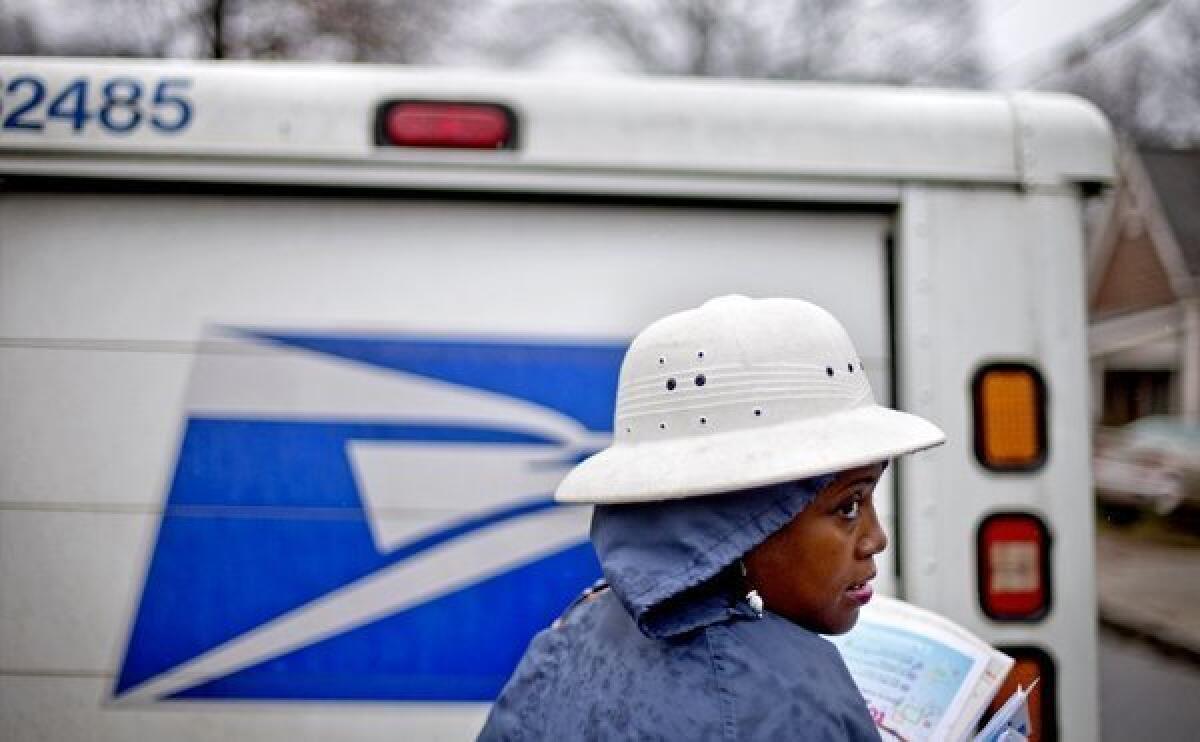Who to tip and how much for doorstep deliveries during the COVID-19 pandemic
- Share via
One of the things L.A.’s Safer at Home restrictions have made clear over the last few months is that just about anything you can buy — from restaurant takeout food and groceries to hummingbird feeders and weed — can be delivered right to your doorstep.
What’s less clear, though, is who should be tipped for their efforts and how much, especially if the fact that delivery drivers from Postmates and Amazon to DoorDash and Instacart might be putting themselves in germs’ way so we don’t have to is taken into account.
To help us navigate the intricacies of coronavirus-era courtesy, we hopped on the phone with the etiquette arbiters at the Burlington, Vt.-based Emily Post Institute, specifically President Lizzie Post, author of several books on modern etiquette and a great-great-granddaughter of Emily. She started off with a reminder of why we tip people in the first place.
What do you say when the person behind you in line at the grocery store is inching into your six-foot bubble? Experts share the pandemic etiquette.
“A tip is a gratuity, which is connected to the word gratitude, so it’s about showing our thanks,” Post said. “When someone has delivered food to our doorstep, we as Americans tend to want to say thanks for that and we do it in the form of a tip. … It’s meant to be something extra.”Prepared-food deliveries
That’s why the first step on the gratitude path — COVID-19 or no COVID-19 — is to figure out whether a gratuity to your takeout delivery driver (either directly from a restaurant or third-party service such as DoorDash, GrubHub or Postmates) is already factored into the price you’re paying either by way of the delivery charge or something else. “You don’t want people thinking that a delivery charge meant that the driver was already getting a tip,” she said.
From there, Post said people tend to calculate the gratuity either as a percentage (“We see some people do 10% to 20% of an order,” she said) or simply tip a flat amount (say $5 or $6) per delivery.
She demurred anything more specific given the Byzantine world of tipping, explaining that the role of the Emily Post Institute was less about laying out hard and fast tipping rules and more about helping people understand what societal norms and expectations are.
Likewise, Post declined to offer a specific amount you should give above the customary gratuity — a pandemic premium if you will — to show special thanks to those who are fetching our food so we can stay safely at home. This is more important now, she said, when so many on both sides of these transactions are feeling the economic pinch.
“These are tough times, and some people can’t afford [to tip] more,” she said, “so the etiquette of it gets a little dicey. [But] the best approach is to try to do the standard minimum [tip], and then anything beyond that that you can do is always going to be appreciated — and you should feel encouraged to do that.”Grocery deliveries
That same approach will hold you in good stead when tipping the folks who are delivering groceries to your door through services such as Yummy.com, Amazon Fresh or Instacart, some of whom are also plucking your comestibles off the shelves. If you’re not sure — and want to factor that effort into your gratuity — ask at the time of delivery.
As with takeout delivery services, most online grocery delivery services allow customers to add a gratuity in-app so that you don’t have to handle cash, which would make the whole “contactless delivery” thing kind of pointless. If cash is the only option, Post said tippers should make every effort to do it as quickly and cleanly as possible.
“Maybe put [the money] down and back away,” she said, “or at least fully extend your arm. Now is not the time to [return to] that 18-inch distance we’re used to.”Package deliveries

What about those currently keeping the entire online economy humming along on four wheels and two strong shoulders — the UPS and FedEx drivers as well as the mail carriers of the beleaguered U.S. Postal Service? Here too, Post said, it’s helpful to start with what’s consistent and expected — in other words, no gratuity at all.
The U.S. Postal Service policy explicitly prohibits employees from accepting “cash or cash equivalents” in any amount, for example, and a representative for UPS told us that the company’s drivers “are expected to politely decline gratuities.”
And in the current environment, Post added, trying to hand cash to the person dropping packages on your doorstep not only slows them down but also increases both parties’ risk of potential coronavirus exposure.
But no gratuity doesn’t mean no gratitude, and Post said her favorite suggestion for expressing the latter involves literally putting it on display. “Just put a sign outside your door that’s specifically for the delivery people — one that says, ‘Thank you so much for the work you’re doing right now,’” she said.
Other viable options (based on a brief survey of the postal carrier and FedEx delivery driver in our L.A. neighborhood) include leaving bottles of water, snacks or a simple cross-street shout-out of thanks. Post sees nothing wrong with keeping the workers of the world well-hydrated and snack-satiated as long as it doesn’t slow their roll.
“You can have a little milk crate outside your door with bottles of water and little bags of pretzels in it and a note that says, ‘Delivery drivers, please help yourselves. We really appreciate the work you’re doing for us,’” Post said. “I bet that would go over nicely.”
More to Read
Sign up for The Wild
We’ll help you find the best places to hike, bike and run, as well as the perfect silent spots for meditation and yoga.
You may occasionally receive promotional content from the Los Angeles Times.










